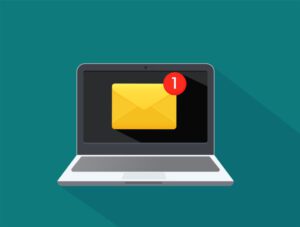 National Clean Out Your Inbox Week starts Jan. 22, and while the observance is designed to inspire email recipients to answer or archive the nearly 3 billion emails sent per day in 2019, it’s also a good time for email marketers to reflect on their approach.
National Clean Out Your Inbox Week starts Jan. 22, and while the observance is designed to inspire email recipients to answer or archive the nearly 3 billion emails sent per day in 2019, it’s also a good time for email marketers to reflect on their approach.
Are you effectively capturing consumer consent to receive emails and making the most of your interactions with customers and prospects? Do your emails go to the right people? Is your marketing operation using the most effective targeting techniques? Is your team up to speed on how inbox service providers (ISPs) classify email senders as spammers? Are you practicing good list hygiene?
All of these are important questions, and if you depend on email to generate leads and drive revenue, it’s critical to understand how the email marketing environment has evolved and how to maximize email engagement. Here are five tips to consider going forward.
1. Be selective about how you acquire email addresses: There’s no excuse these days for sending email to customers who haven’t specifically opted-in to receive email from your company. It’s no longer acceptable to take shortcuts like pre-populating boxes to obtain passive consent, and it’s never a good idea to purchase email lists. Respecting consumer privacy is a must.
So, make sure your email lists contain true opt-ins only (again, do not buy lists!), and ensure every address on the list is valid before you launch your email campaign. Validating addresses is important because even opt-in lists can contain email addresses that have syntax issues and using lists with errors like that can get your company blacklisted as spam.
2. Engage with new subscribers: When customers opt-in to receive email from your company, get back to them right away—within minutes ideally, and no later than an hour. A timely welcome response is crucial because customers move on to other tasks, and if the response is delayed, they might forget they opted in—and you’ll lose the opportunity to engage.
A welcome message is a great vehicle for collecting data that can help you customize future outreach. For example, birthdays are an excellent data point—and an annual opportunity to reach out. The welcome message should also set expectations about what sort of content the new subscriber can expect from you as well as outreach frequency.
Other articles you might enjoy:
- Three Ways to Incorporate Video Into Your Email Marketing Program
- Four Tips for Getting Email Marketing Feedback
- Timing Matters in Email Marketing: Report
3. Know your delivery basics: Entire books have been written about deliverability (here’s a link to a helpful overview). An exhaustive account of email marketing best practices is beyond the scope of a single article, but knowing delivery basics is crucial. Develop a solid understanding of industry best practices and remain up to date, since the email environment evolves constantly.
Expert assistance from deliverability professionals is a great way to ensure compliance with federal and global laws and alignment with customer expectations and reputation management best practices. Finding a partner who specializes in email deliverability and following their advice will allow you to maximize campaign impact.
4. Carefully cultivate email contacts: When handled correctly, emails are an excellent way to build relationships with customers. Email campaigns that are tailored to customer interests, sent with the right cadence and consistently deliver value deliver ROI. You can get to know the customer through browsing, purchase and engagement data and customize outreach accordingly.
One massive mistake too many marketers make is to keep sending emails to customers who don’t engage. As a best practice, stop sending email if there’s no engagement for 60-90 days. Use email to encourage engagement prior to that, but if the customer doesn’t respond, stop emailing. If you continue past the 60-90 day window, ISPs may blacklist your company.
5. Practice good list hygiene: One of the best ways to avoid being blacklisted is to practice good list hygiene. Some marketers equate quantity with quality, thinking that a longer list is always better, so they’re reluctant to cull email addresses. That’s the wrong way to look at it; sketchy addresses can drag down the entire campaign, the good contacts with the bad.
Exclude inactive contacts and cull invalid addresses, accessing expert help as needed. It’s also imperative to promptly observe unsubscribe requests and to provide users with an option to change their address. Without an address change option, subscribers may unsubscribe and then opt-in again to direct email to a new address, but you lose all of their valuable data.
Resolve to make sure your company’s emails a welcome addition to customer inboxes in 2020.
John Landsman is Manager of Research Analytics at Sparkpost.
 Network
Network

